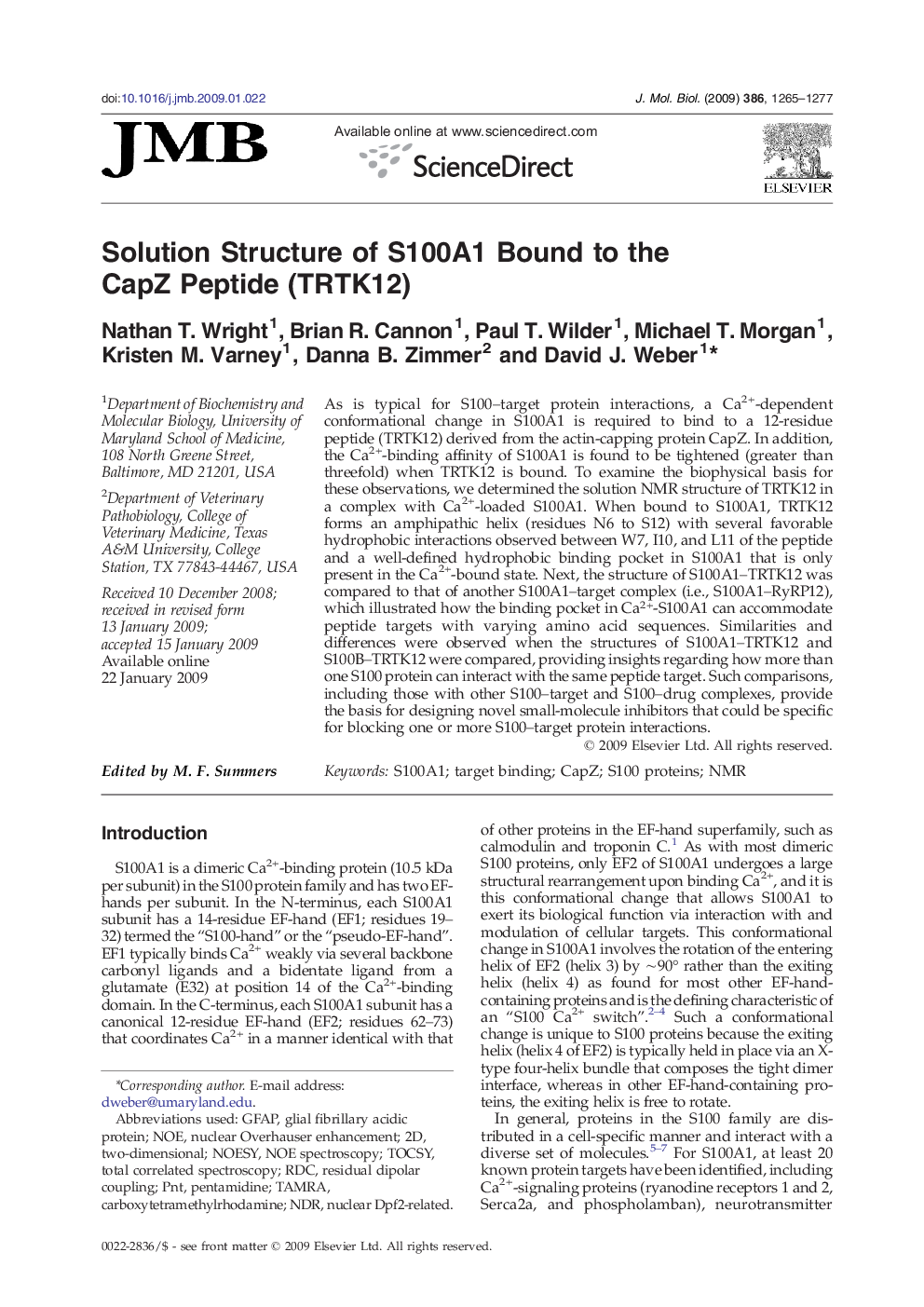| Article ID | Journal | Published Year | Pages | File Type |
|---|---|---|---|---|
| 2186833 | Journal of Molecular Biology | 2009 | 13 Pages |
As is typical for S100–target protein interactions, a Ca2+-dependent conformational change in S100A1 is required to bind to a 12-residue peptide (TRTK12) derived from the actin-capping protein CapZ. In addition, the Ca2+-binding affinity of S100A1 is found to be tightened (greater than threefold) when TRTK12 is bound. To examine the biophysical basis for these observations, we determined the solution NMR structure of TRTK12 in a complex with Ca2+-loaded S100A1. When bound to S100A1, TRTK12 forms an amphipathic helix (residues N6 to S12) with several favorable hydrophobic interactions observed between W7, I10, and L11 of the peptide and a well-defined hydrophobic binding pocket in S100A1 that is only present in the Ca2+-bound state. Next, the structure of S100A1–TRTK12 was compared to that of another S100A1–target complex (i.e., S100A1–RyRP12), which illustrated how the binding pocket in Ca2+-S100A1 can accommodate peptide targets with varying amino acid sequences. Similarities and differences were observed when the structures of S100A1–TRTK12 and S100B–TRTK12 were compared, providing insights regarding how more than one S100 protein can interact with the same peptide target. Such comparisons, including those with other S100–target and S100–drug complexes, provide the basis for designing novel small-molecule inhibitors that could be specific for blocking one or more S100–target protein interactions.
